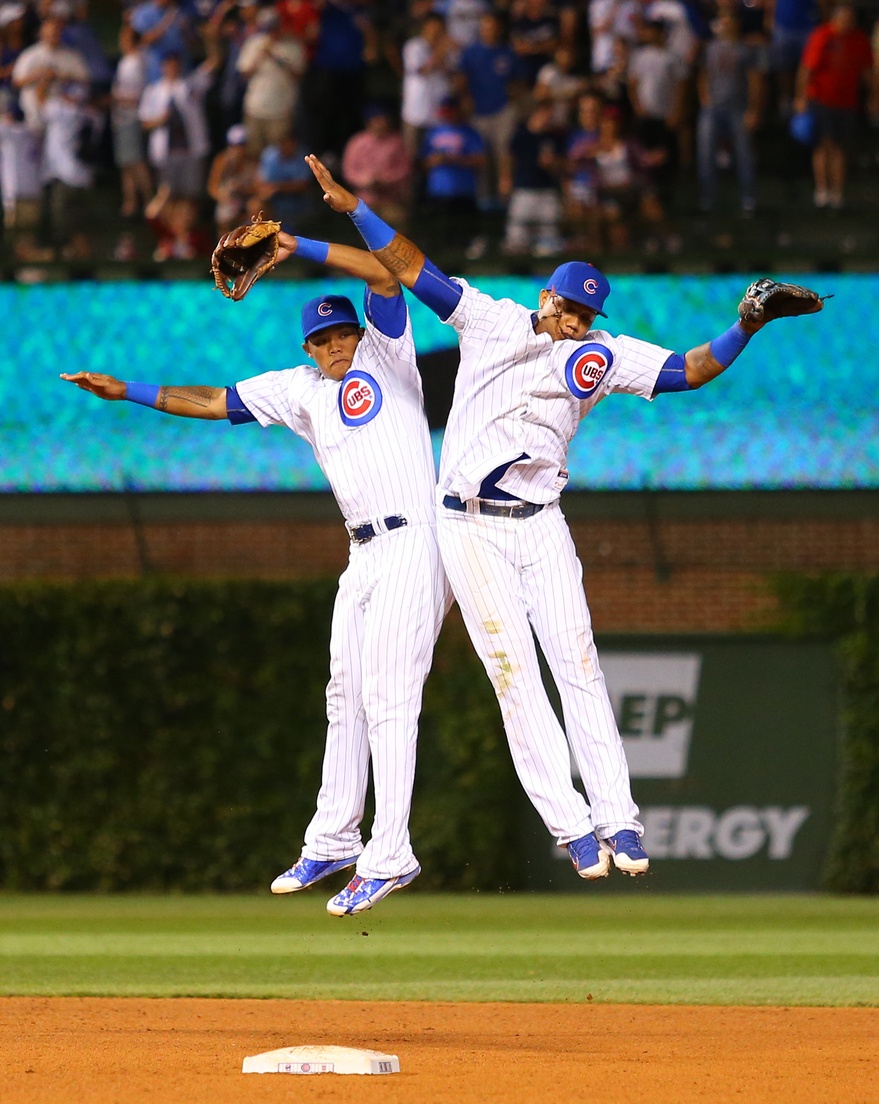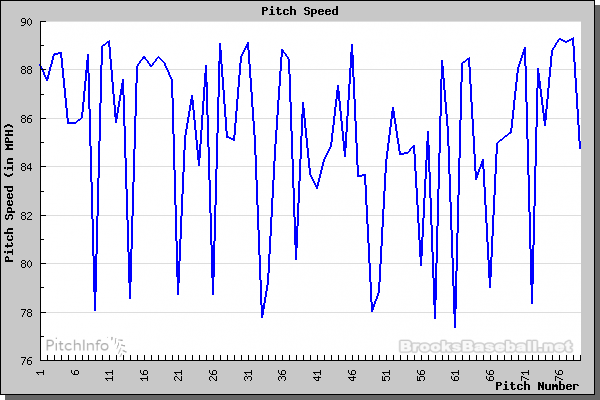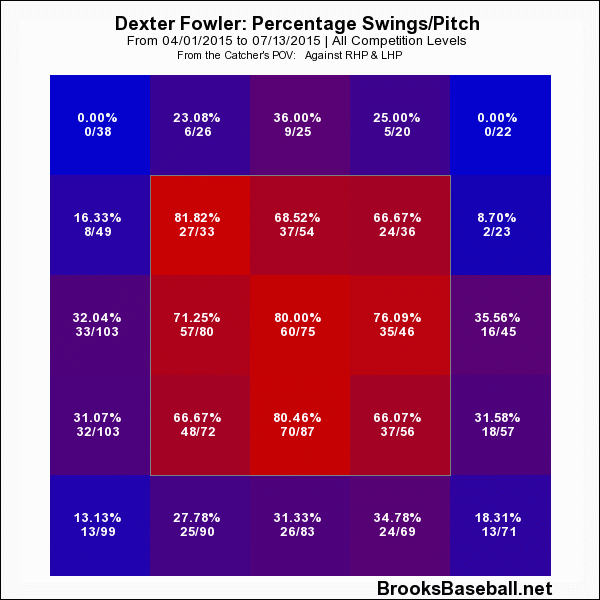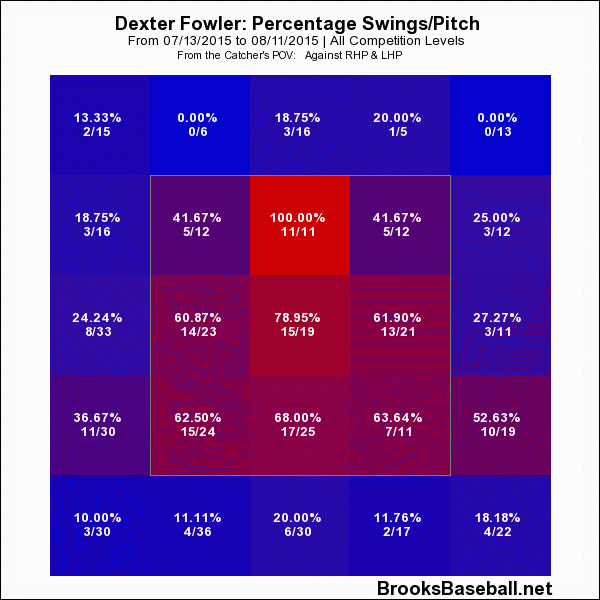Top Play (WPA): It’s fun for me to get to recap a Cubs victory, because it doesn’t happen for me all that often. The Cubs 11th win in their last 12 games takes my recap record to 4-9 on the season (you care, I know). Of course, that’s extremely trivial, but I still find it impressive that a team that’s now 15 games over .500 has performed so poorly under my watchful eye.
Anyway, the top play came for the Cubs early on. In the bottom of the second inning and the score still tied at zero, Kris Bryant doubled to left field with one out. It appeared, on first glance, like left fielder Khris Davis may have made a diving snag of Bryant’s sinking liner. But the ball bounced in the grass before hitting Davis’ glove, and Bryant galloped into second base easily.
Jorge Soler followed with another one of his patented smashes, this time a single up the middle (.098) and within inches of probably shattering all the bones in Brewers starter Taylor Jungmann’s body. Bryant came around to score and give the Cubs a 1-0 lead. The Cubs would score two more runs in the inning, which featured two errors by the Brewers.
Bottom Play (WPA): Outside of Adam Lind’s two-run homer, the only real threat the Brewers mounted was in the third inning. After Jean Segura grounded out to lead off the inning and Cubs starter Dan Haren struck out Logan Schafer looking, back-to-back singles by Jungmann and Shane Peterson brought the tying run to the plate. But Davis hit a soft grounder to Bryant that led him right to third base for the force out (-.037) to end the threat.
Cat Garcia recently wrote about how Haren was the right choice for the Cubs, and he certainly was Tuesday night. He wasn’t dominant, but he pitched relatively well in his second start since coming over from the Marlins. He only threw 5 1/3 innings and allowed three runs, but he struck out six batters and only walked one.
Haren threw 79 pitches, 54 of which were strikes, and held the Brewers in check on yet another night that the Cubs bats got it going early. He even ramped his four-seam fastball up to 89 miles per hour, which I think is the equivalent of Aroldis Chapman throwing 110 mph. The difference in velocity kept hitters off balance, and the Brewers were only able to get six runners on base against Haren.
Key Moment: How about Starlin Castro? He lost his starting job and hadn’t played in the last three games, and it was announced just recently that Castro would start to work at second and third base. So of course, he entered the game and got his first action in his major-league career at second base.
Castro went 0-for-1 at the plate with a popout to first base, but the bigger story is that he actually looked really good in the field. He showed great range to his left to get to a ball that looked to be headed to right field, and made a low throw from the seat of his pants that Anthony Rizzo wasn’t quite able to grab.
But then, with one out in the ninth inning, Castro made this gem of a play in which he ran on dead sprint towards the right-field foul territory with his back to the field, and made a brilliant catch while managing to avoid players and all sorts of crap—as Maddon so eloquently put it after the game. It was the type of play Castro regularly made look routine while playing short, but doing so in his first game at second after multiple days off—as well as dealing with the mental fatigue that likely comes with being benched for the first time in his career—certainly is worthy of accolades.
Trends to Watch: Dexter Fowler came to the Cubs with a reputation for getting on base. In 3,140 career plate appearances with the Rockies and Astros, Fowler put up a slash line of .271/.366/.419. But something just didn’t look right with Fowler at the plate early on this year, and he went into the All-Star break hitting .232/.308/.369. He had a 9.4 percent walk rate, which is solid but would represent a career low.
Since the All-Star break, Fowler has come alive at the plate. His slash line has jumped to a much more productive .262/.415/.440, with the walk rate also jumping to an insane 19.8 percent over the 22 game period. Fowler went 0-for-3 Tuesday night, but he added two more walks and scored a run.
The difference? Not surprisingly, Fowler has been swinging at far less pitches outside the zone. Here is his strike zone plot for swings before the All Star break:
Now, compare to the percentage of swings outside the zone since the All-Star Break:
With the emergence of Kyle Schwarber and Joe Maddon’s placement of Schwarber immediately behind Fowler, the top of the Cubs lineup has become extremely uncomfortable for opposing pitchers in the last few weeks.
Coming Next: The Cubs (63-48) continue their series with the Brewers (48-66) Wednesday night at 7:05pm with Jason Hammel facing off against former-Cub Matt Garza. Garza allowed three runs on four hits and four walks in six innings against the Cubs in his last start against them on August 1st, and has a 4.95 ERA/4.82 FIP/5.11 DRA on the season.
Hammel has struggled in four starts since leaving after one inning against the Cardinals on July 8th with a hamstring strain. He hasn’t made it through the sixth inning yet, and has a 4.91 ERA to go along with a .888 OPS allowed since returning from injury. The important thing is that the Cubs are 3-1 in those games, but they still need Hammel to get it going again.
Lead photo courtesy of Caylor Arnold-USA TODAY Sports



